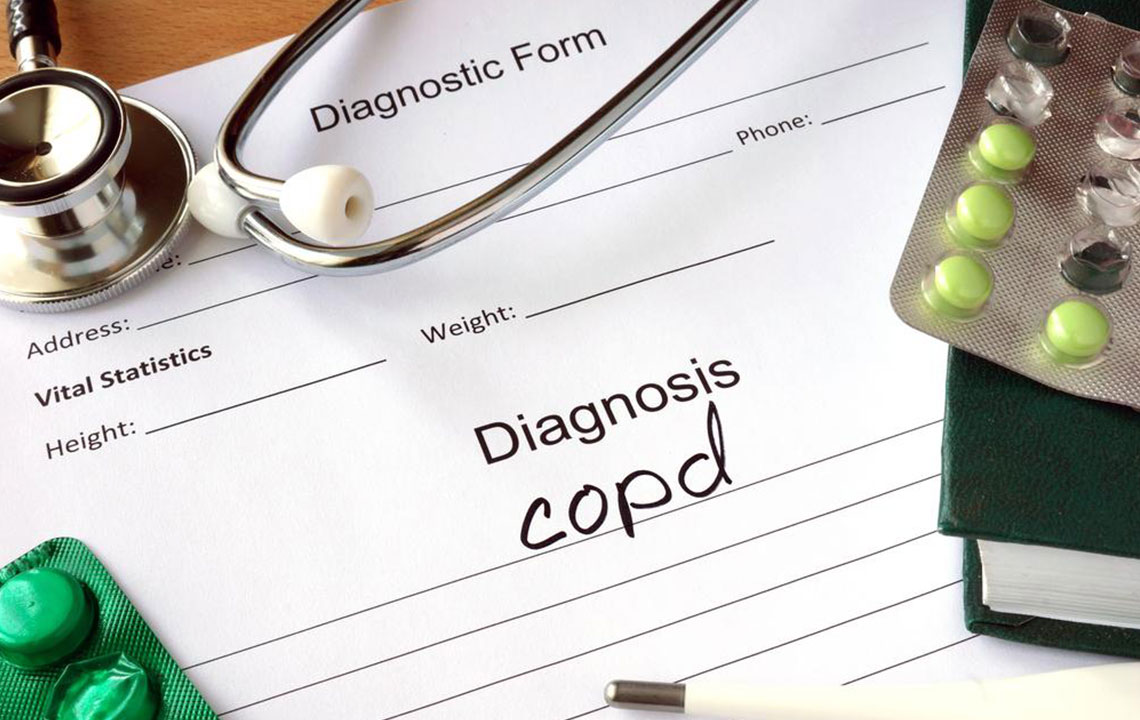Comprehensive Guide to COPD: Understanding Symptoms, Causes, and Disease Progression
This comprehensive guide explores COPD, detailing its symptoms, causes, disease stages, diagnostic methods, and management strategies. Emphasizing early detection, smoking cessation, and tailored treatments, it aims to help patients and caregivers better understand and control this progressive lung disease, ultimately improving quality of life and health outcomes.

Chronic Obstructive Pulmonary Disease (COPD) is an umbrella term that describes a group of progressive lung conditions characterized by airflow obstruction. These conditions include chronic bronchitis, emphysema, stubborn asthma, and bronchiectasis. COPD is a leading cause of morbidity and mortality worldwide, significantly impacting patients' quality of life. It develops gradually, often starting with mild symptoms that can be easily overlooked, but as the disease advances, it leads to serious health complications. Early recognition and management are crucial to slow disease progression and improve patient outcomes. This comprehensive guide explores the symptoms, causes, disease stages, diagnostic approaches, and options for managing COPD effectively.
Understanding COPD Symptoms
The early signs of COPD can be subtle, making it challenging to diagnose in its initial stages. However, recognizing the key symptoms can prompt timely medical intervention. Common symptoms include persistent shortness of breath, especially during physical activity, wheezing sounds when breathing, chronic cough that may produce mucus, and a sensation of chest tightness. As the disease progresses, these symptoms tend to worsen, significantly impairing daily life and increasing the risk of exacerbations and hospitalizations. Patients often experience fatigue, reduced exercise tolerance, and sometimes unintended weight loss in advanced stages. Understanding these symptoms and seeking prompt medical evaluation can make a substantial difference in managing the condition effectively.
Risk Factors and Causes of COPD
The development of COPD is multifactorial, with various risk factors contributing to its onset. The most significant factor is prolonged exposure to airborne pollutants, particularly cigarette smoke, which accounts for the majority of cases globally. Both active smoking and passive exposure to tobacco smoke substantially increase risk. Other environmental irritants such as industrial chemicals, fumes, dust, and pollutants from indoor and outdoor environments are also implicated in disease development. Genetic predisposition plays a role, especially in individuals with alpha-1 antitrypsin deficiency, a rare inherited disorder that affects lung health. Additionally, factors like urban pollution, occupational exposure to dust and chemicals, and a history of respiratory infections in childhood can contribute to increased susceptibility to COPD. Addressing these risk factors through lifestyle changes, environmental control, and early screening can significantly reduce the disease burden.
Importance of Early Diagnosis and Screening
Timely diagnosis of COPD is vital to prevent irreversible lung damage and improve prognosis. Healthcare providers utilize a combination of medical history assessment and diagnostic testing to identify COPD early. Spirometry, a simple and non-invasive lung function test, is the gold standard for confirming airflow limitation and quantifying disease severity. Imaging techniques such as chest X-rays and CT scans help visualize lung damage and rule out other diseases. Classification systems like the GOLD (Global Initiative for Chronic Obstructive Lung Disease) staging and the BODE index (Body mass index, Obstruction, Dyspnea, and Exercise capacity) assist clinicians in evaluating disease severity, tailoring treatments, and predicting outcomes. Regular check-ups and lung function monitoring are crucial, especially for individuals with known risk factors or early symptoms.
Stages of COPD: From Mild to Very Severe
The progression of COPD is categorized into four distinct stages, each characterized by specific symptoms, lung function decline, and management strategies. Recognizing these stages helps patients and healthcare providers to implement appropriate treatment plans and lifestyle adjustments.
Stage 1 - Mild COPD: Often asymptomatic, some individuals may experience a dry cough or slight shortness of breath during exertion. Lung function tests reveal only mild airflow limitation. At this stage, intervention focuses on smoking cessation and lifestyle modifications to prevent progression.
Stage 2 - Moderate COPD: Symptoms become more noticeable, including increased cough, mucus production, and breathlessness during physical activity. Patients often seek medical help at this point. Pharmacological treatments such as bronchodilators are introduced, and pulmonary rehabilitation programs are recommended to improve quality of life.
Stage 3 - Severe COPD: Lung damage becomes more significant, leading to frequent exacerbations, persistent breathlessness, fatigue, and reduced exercise capacity. Additional medications, oxygen therapy, and behavioral interventions are necessary to manage symptoms and prevent hospitalizations.
Stage 4 - Very Severe COPD: Marked by critical decline in lung function, patients may require long-term oxygen therapy, and the risk of respiratory failure increases. Symptoms are debilitating, and the focus shifts to palliative care, symptom control, and improving quality of life. Urgent medical attention becomes essential to manage life-threatening exacerbations.
Monitoring disease progression through regular lung function testing and imaging is essential. Patients should work closely with their healthcare providers to adapt treatment strategies as the disease advances. Emerging therapies, lifestyle interventions, and supportive care help to mitigate symptoms and enhance patient well-being.
Managing COPD Effectively
While COPD is a chronic, progressive disease, many treatment options are available to improve symptoms, slow progression, and enhance quality of life. Smoking cessation remains the single most effective intervention for preventing and managing COPD. Pharmacological treatments include bronchodilators, corticosteroids, phosphodiesterase inhibitors, and other inhaled medications tailored to disease severity. Pulmonary rehabilitation programs—a combination of exercise training, education, and behavioral modifications—are crucial in improving respiratory function and reducing exacerbations.
Other management strategies include ensuring vaccinations against influenza and pneumococcal disease to prevent respiratory infections, adopting proper nutrition, and avoiding environmental pollutants. Advanced therapies such as stem cell therapy and new medication options are under investigation and hold promise for future treatment. In severe cases, supplemental oxygen therapy and surgical interventions like lung volume reduction or transplantation may be necessary.
Patient education and self-management are vital components of COPD care. Action plans to recognize exacerbation signs early and seek prompt medical attention can drastically reduce hospitalization rates. Embracing a holistic approach that combines medical treatment, lifestyle adjustments, and supportive care maximizes the potential to live well despite the condition.
In conclusion, COPD requires vigilant management, early diagnosis, and comprehensive care to improve long-term outcomes. Advances in research continue to open new avenues for treatment and possibly even cure in the future. Awareness, preventative strategies, and patient engagement are key to fighting this prevalent chronic disease effectively.





